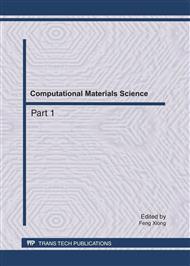p.924
p.930
p.934
p.940
p.946
p.950
p.955
p.960
p.966
Comparison of Three Methods of MOM, MLFMM and PO/MOM for Simulation of Variable Wall Thickness Radome
Abstract:
a Design Concept of Piecewise Variable Wall Thickness of Radome Is Proposed to Simulate the Radome which Has Variable Wall. the Paper Calculates the Far Field of a Medium-Size Radome in the Case of Piecewise Variable Thickness by Three Methods as Follows: Method of Moment (MOM), Multilevel Fast Multipole Method (MLFMM) and Physical Optics& the Method of Moments (PO/MOM) Respectively. after Comparing the Results, we Find that the PO/MOM Method Have the Superiority in Simulation of Radome’s Electromagnetic because it’s More Accuracy and Less Memory Consuming than the other Two Methods. Also it Proves the Feasibility of the Design Concept of Piecewise Variable Thickness for Radome.
Info:
Periodical:
Pages:
946-949
Citation:
Online since:
July 2011
Authors:
Keywords:
Price:
Сopyright:
© 2011 Trans Tech Publications Ltd. All Rights Reserved
Share:
Citation:


